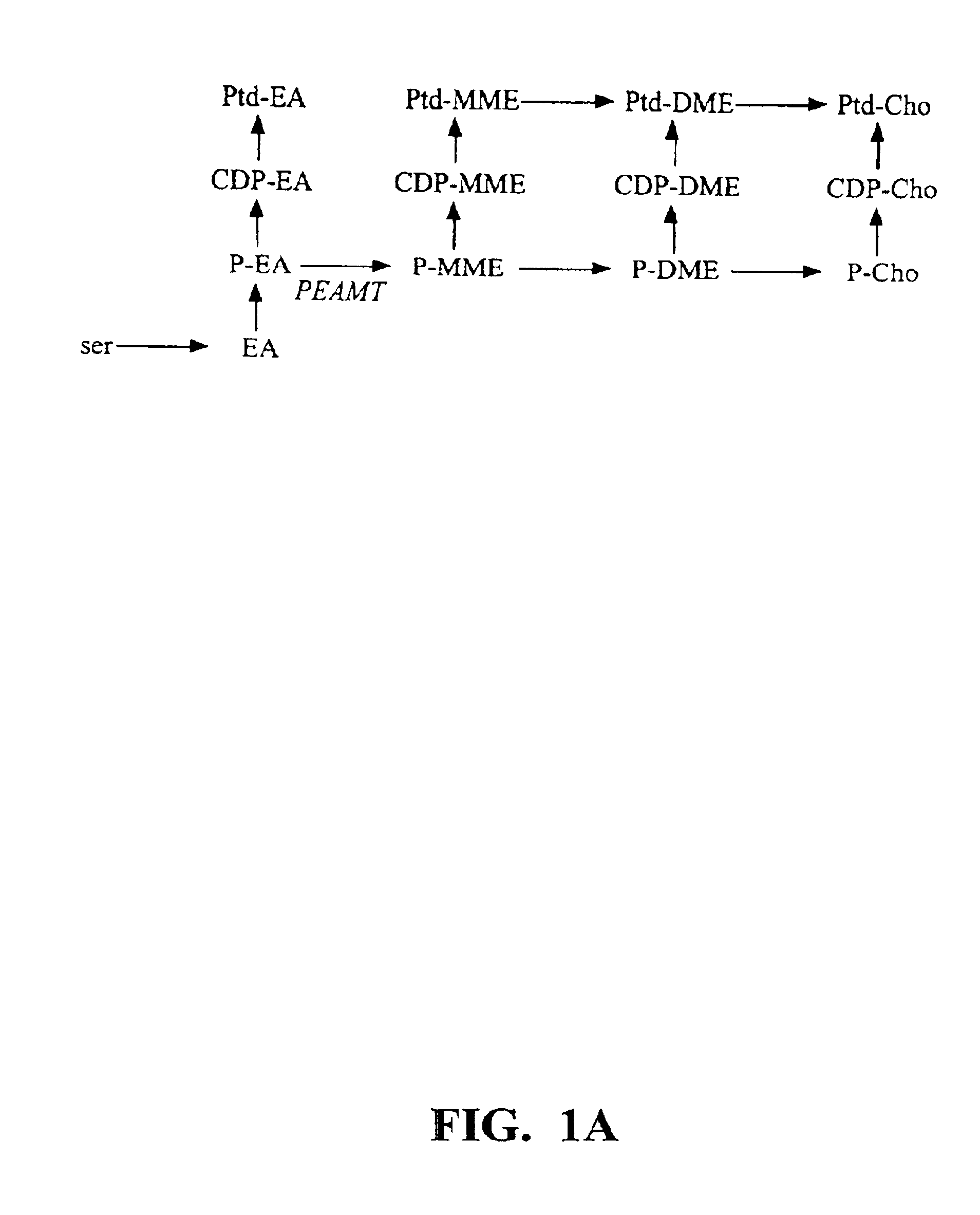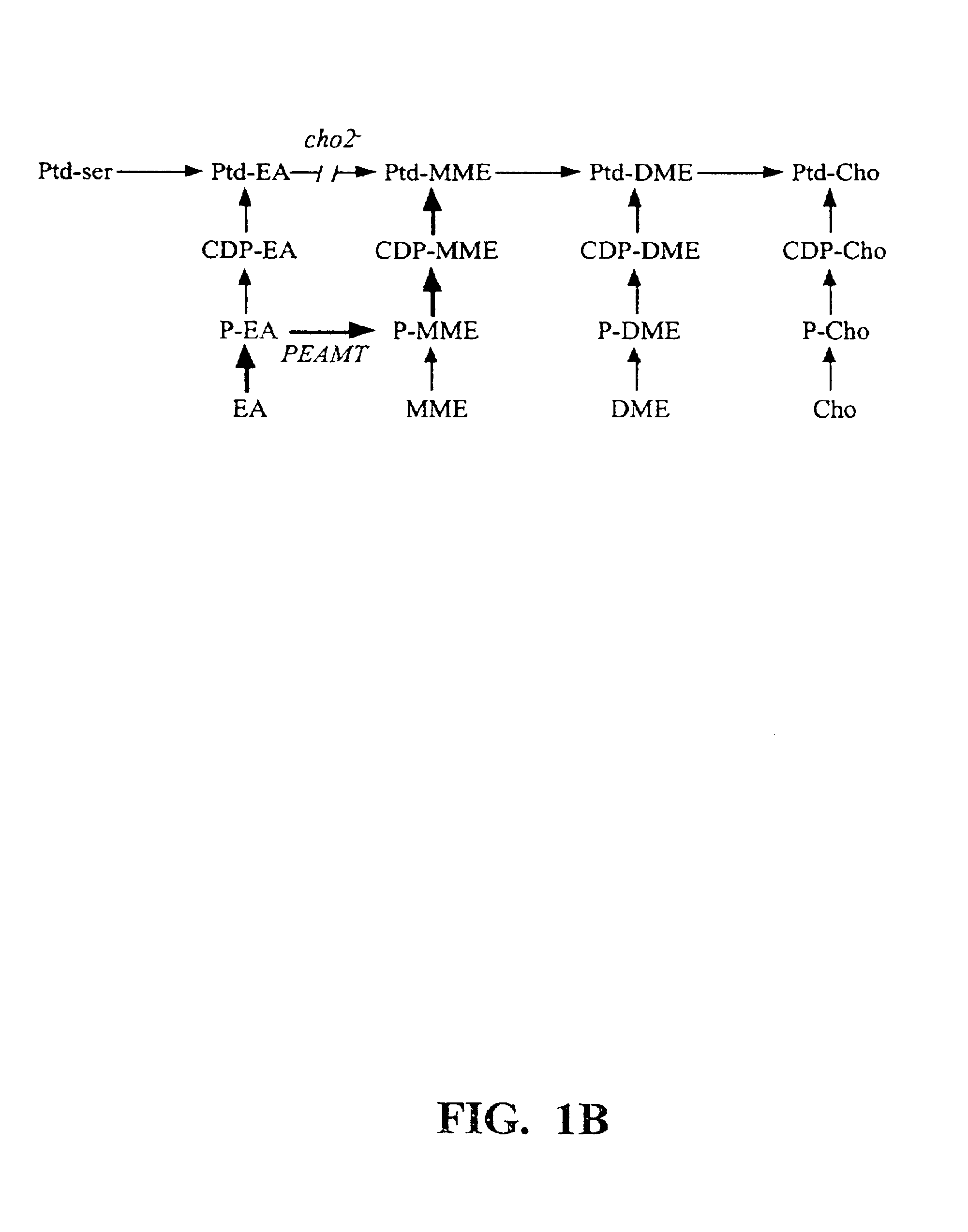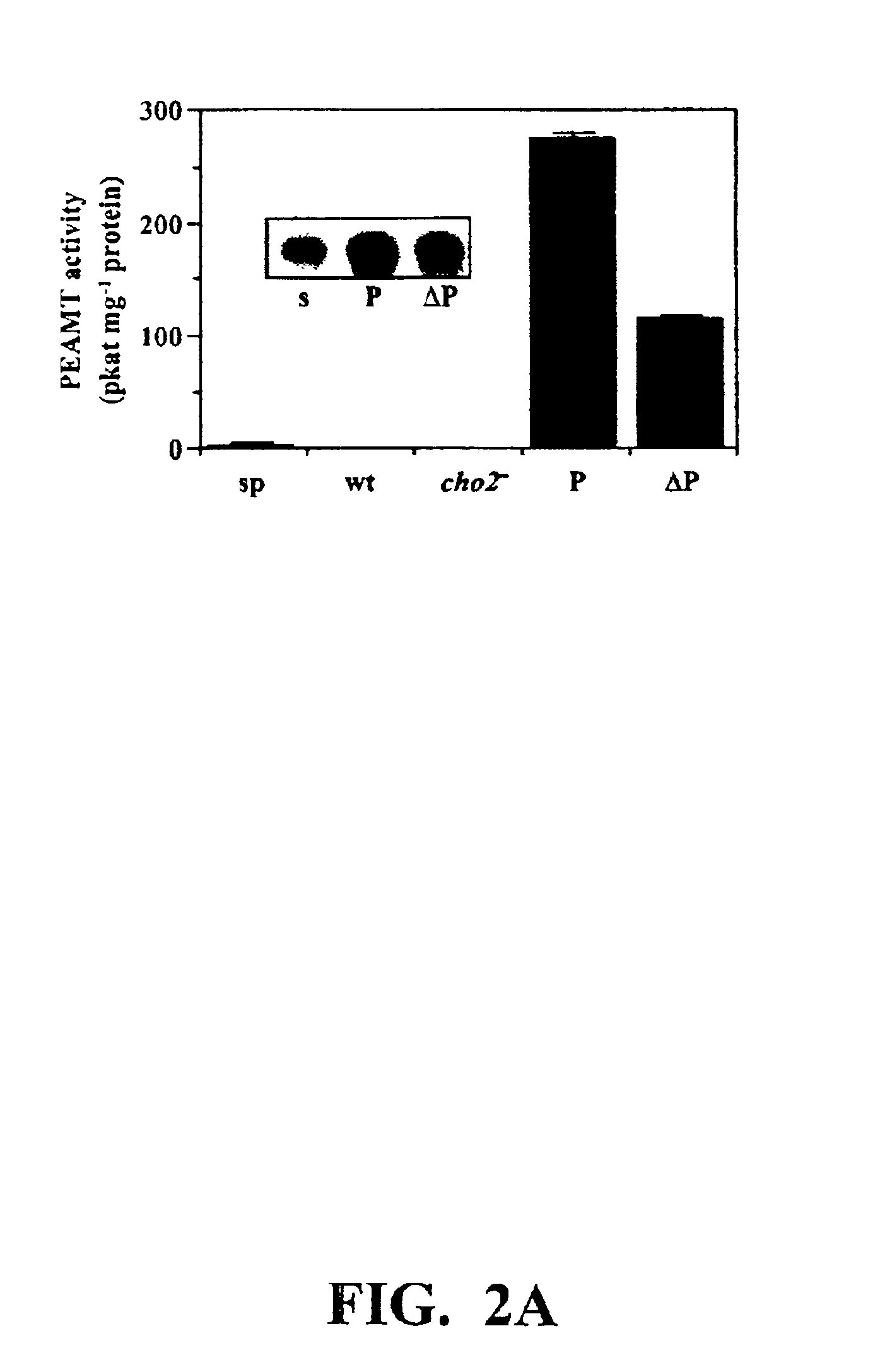Polynucleotide compositions encoding S-adenosyl-L-methionine:phosphoethanolamine N-methyltransferase and methods for modulating lipid biosynthesis in plants
a technology of phosphoethanolamine and n-methyltransferase, which is applied in the field of genetic manipulation of plants, can solve the problems of little glybet accumulation, and achieve the effect of increasing the nutritional value of plants
- Summary
- Abstract
- Description
- Claims
- Application Information
AI Technical Summary
Benefits of technology
Problems solved by technology
Method used
Image
Examples
example 1
5.1 Example 1
Cloning and Characterization of PEAMT
5.1.1 Experimental Procedures
5.1.1.1 Chemicals
[0324][32P]dCTP (3000 mCi mmol−1) and [methyl-14C]AdoMet (59 mCi mmol−1) were purchased from NEN; the specific activity of AdoMet was adjusted to the desired value with unlabeled compound (Sigma, St. Louis, Mo.). Chiral HPLC (Beaudouin et al., 1993) showed that [methyl-14C]AdoMet was >99% in the S,S (biologically active) form. Unlabeled AdoMet was 85% in the S,S form and 15% in the R,S (inactive) form; specific activities were calculated using the S,S-AdoMet content. [33P]P-MME and [14C]P-Cho were made as described (McNeil et al., 2000). Restriction and modification enzymes, and oligonucleotides were from Gibco-BRL, NEB or Boehringer Mannheim. P-Cho (Na2 salt) was from TCI America (Portland, Oreg.). P-EA and all other biochemicals were from Sigma. AG-50 (HR+) ion exchange resin was from BioRad. Silica gel G (0.25-mm) TLC plates were from Merck.
5.1.1.2 Plant Materials
[0325]Spinacia olerace...
example 2
5.2 Example 2
Sequence of PEAMT Polypeptides and Polynucleotides
PUM
| Property | Measurement | Unit |
|---|---|---|
| temperature | aaaaa | aaaaa |
| Tm | aaaaa | aaaaa |
| temperature | aaaaa | aaaaa |
Abstract
Description
Claims
Application Information
 Login to View More
Login to View More - R&D
- Intellectual Property
- Life Sciences
- Materials
- Tech Scout
- Unparalleled Data Quality
- Higher Quality Content
- 60% Fewer Hallucinations
Browse by: Latest US Patents, China's latest patents, Technical Efficacy Thesaurus, Application Domain, Technology Topic, Popular Technical Reports.
© 2025 PatSnap. All rights reserved.Legal|Privacy policy|Modern Slavery Act Transparency Statement|Sitemap|About US| Contact US: help@patsnap.com



